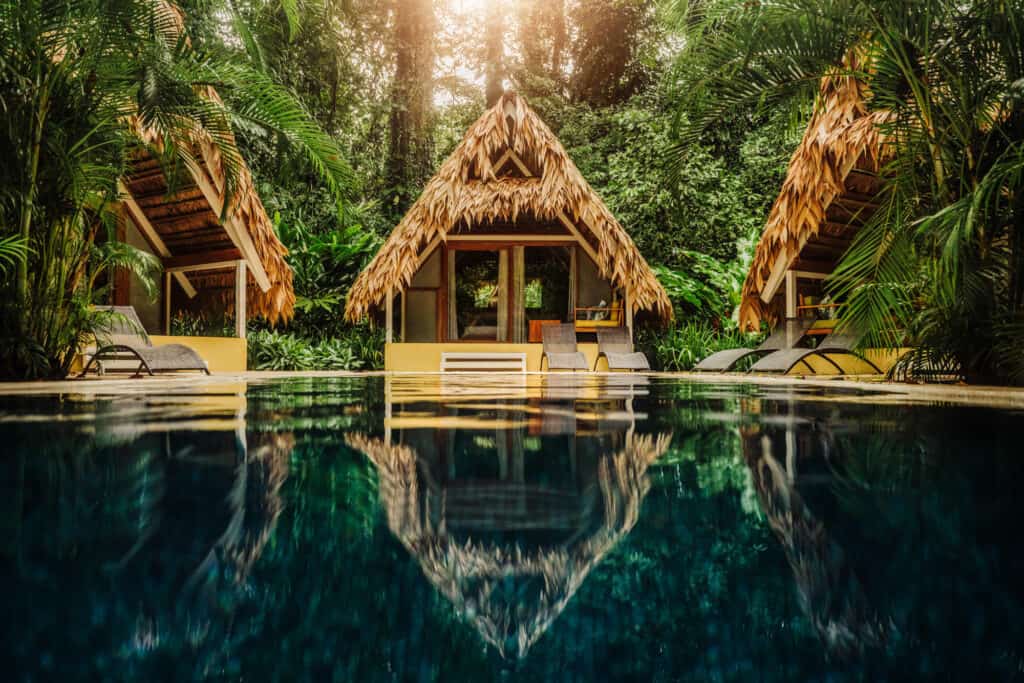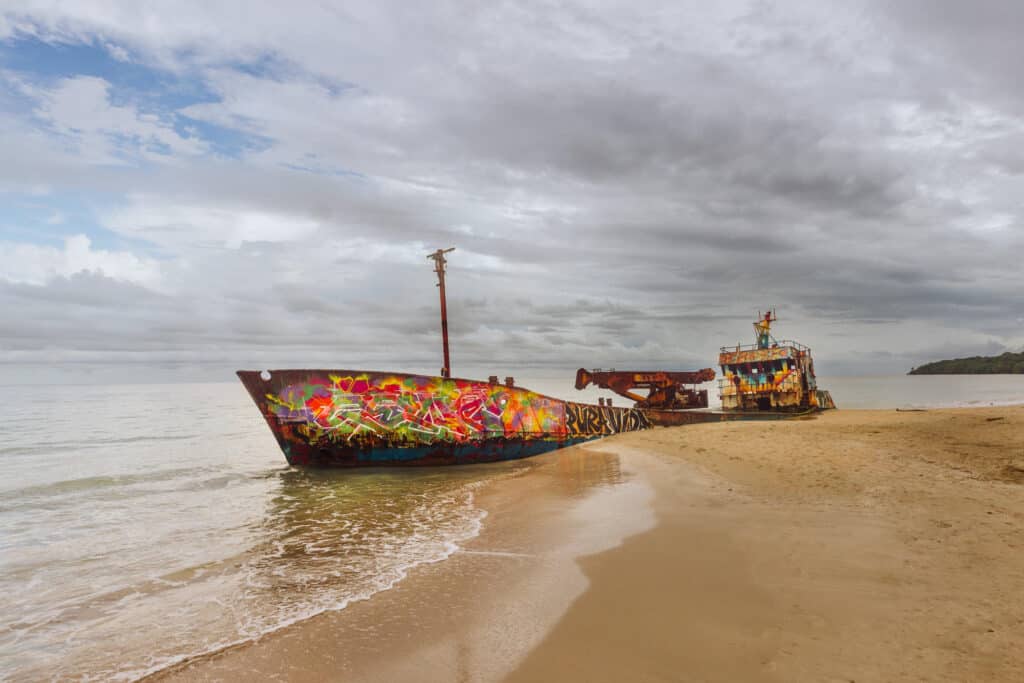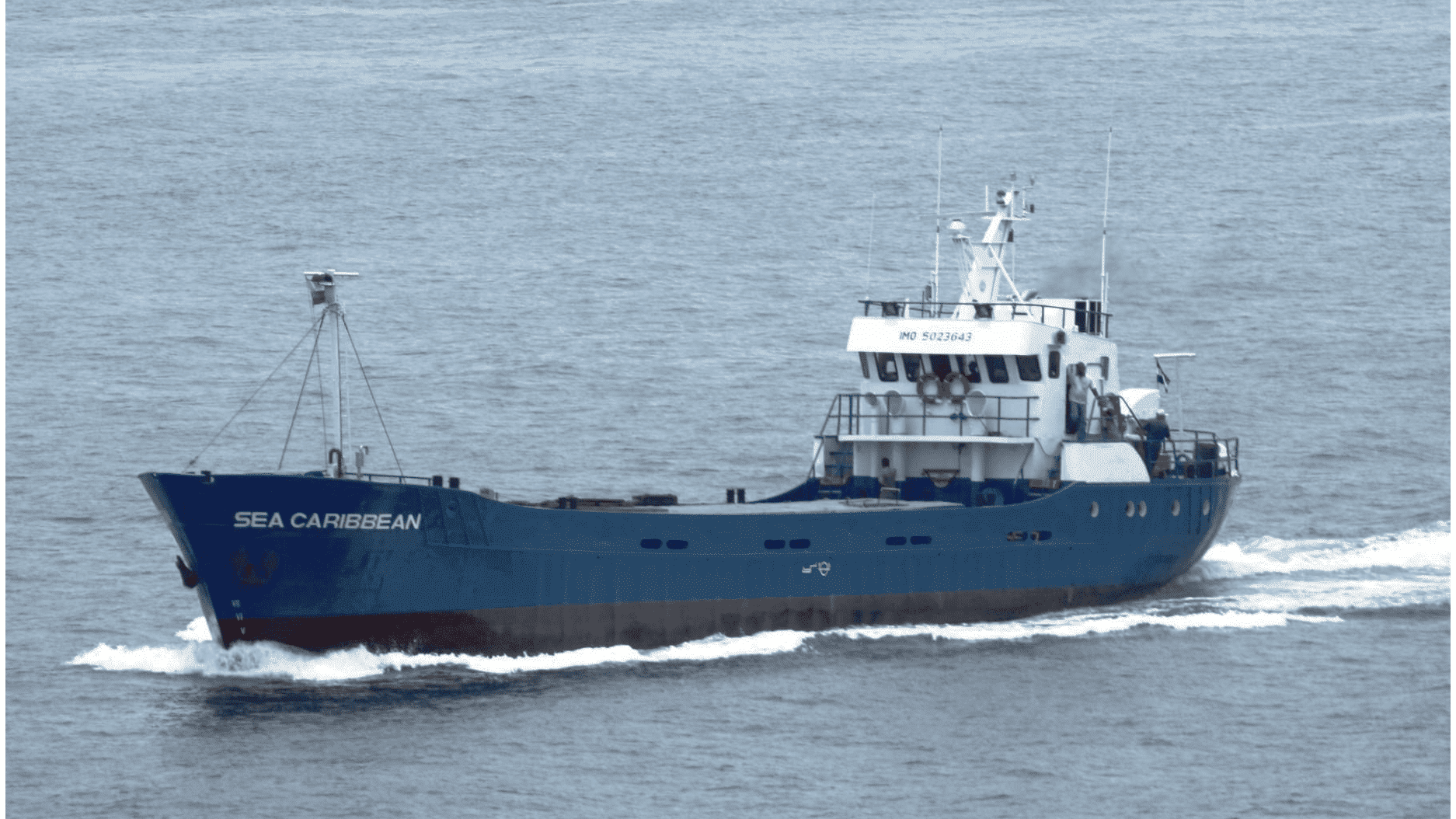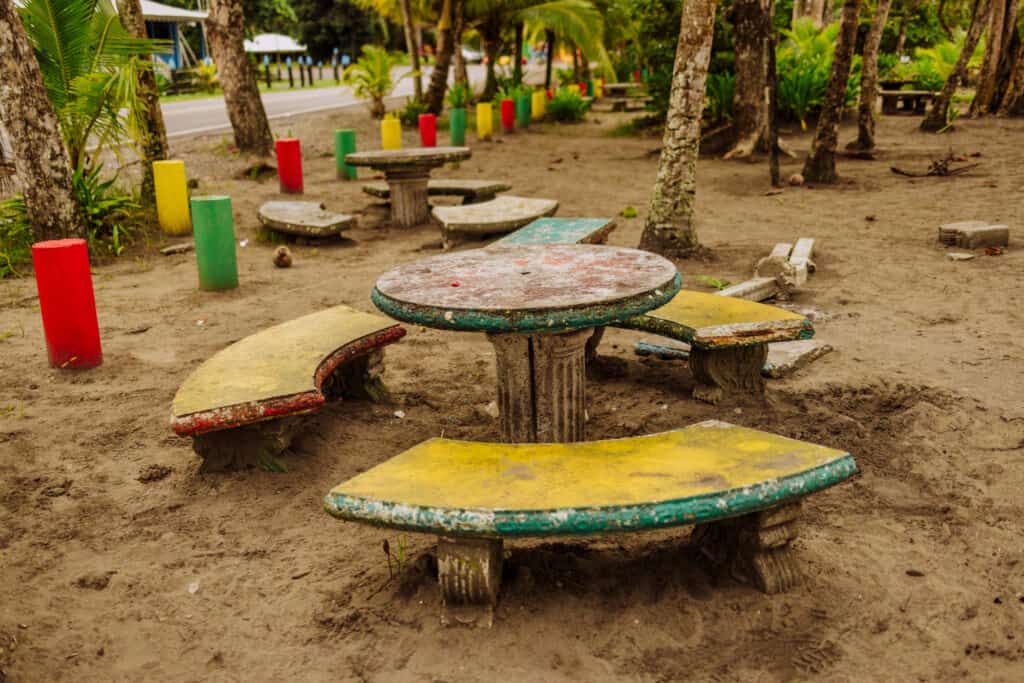Manzanillo Beach, Costa Rica: Visit the Shipwreck!
TRAVEL GUIDE: MANZANILLO BEACH, COSTA RICA
Manzanillo Beach is in the province of Limón, where you’ll find a longtime fishing village on Costa Rica’s Caribbean Coast.
Manzanillo is becoming more popular with tourists, but remains a rural, small town, surrounded by lush rainforest and warm, tropical water.
You’ll find friendly people in Manzanillo, Costa Rica, along with abundant natural wonders, great hotels nearby, and the remains of a shipwreck to explore right on Manzanillo Beach!
Manzanillo Beach Hotels
While Manzanillo is home to a few hotels, rental homes and lodges, I’d suggest staying a few miles northwest, toward Puerto Viejo.
You can use this interactive map to plug in the dates you’re considering and check out what’s available:
Shawandha Ecolodge is one of the best deals in the region, and only a 10 minute drive from Manzanillo Beach. You’ll be surrounded by the rainforest in private huts or bungalows, and still be able to walk to another nearby beach (Playa Chiquita).
An upscale hotel near Manzanillo Beach would be Aguas Claras. It’s part of the Cayuga Collection of hotels, which focus on sustainability and luxury.
Aguas Claras offers beautiful suites and cabins, along with first-rate food, a stunning pool, and direct beach access to Playa Chiquita. Aguas Claras is only a 10 minute drive from Manzanillo Beach.
Location of Manzanillo Beach, Costa Rica
Manzanillo Beach is on Costa Rica’s Caribbean Coast, in the southeastern part of the country. This is a rural part of Costa Rica, hours away from the country’s main cities.
It’s actually very close to Costa Rica’s border with Panama.
How to get to Manzanillo Beach
You could fly (a small plane on Sansa Airlines) into Limon and rent a car to drive the 70 kilometers south to Manzanillo.
If you’d rather spend the travel time napping, you can always hire someone else to do the driving for you! There are a number of transit services in Costa Rica that will bring you to Puerto Viejo and Manzanillo Beach.
➡️ BOOK a Transport: Private Driver (from San Jose’s airport or hotels)
I don’t really enjoy driving, but renting and driving was the best option for us on this trip from San Jose.
➡️ BOOK HERE: Rental Cars in Costa Rica
Manzanillo is a four or five-hour drive from SJO.
Renting a car is easy and efficient from the capital city’s airport. Despite the usual challenges that come along with driving in a foreign country, we enjoyed the road trip.
➡️ Jared’s Detours Blog: Renting & Driving a Car in Costa Rica
If you drive, I’d suggest a stay in the Turrialba area along the way. We loved our visit to Aquiares (Costa Rica’s largest coffee farm, which is Rainforest Alliance Certified).
➡️ Jared’s Detours Blog: Costa Rica Coffee Tours
Is Manzanillo Safe?
You never know how welcoming people who live in a town are going to be toward tourists, but you’ll feel safe in Manzanillo.
Frankly, we felt safe and welcomed in Puerto Viejo, Cahuita, Manzanillo, and all of the towns we visited along Costa Rica’s Caribbean Coast.
Locals will happily chat with you, answer your questions, and warn you (like they did to us) not to park under coconuts since they can fall and crack windshields.
The Manzanillo Beach Shipwreck
While Manzanillo Beach has always been worth a visit for tourists on Costa Rica’s Caribbean coastline, interest peaked after a cargo vessel ran aground.
It’s remained lodged in the sand for more than five years, and despite the initial plans to move it, the rusted remains don’t appear to be going anywhere.
Artists claimed it as a public art canvas, and these days you’ll always find people making the short walk down the beach from the pretty beach town of Manzanillo to check it out.
We were there during a lull in visitors, so we had the whole ship to ourselves. I have to say: walking around inside the captain’s quarters and on the bridge was a bit eerie!
From the bridge, the waves make loud noises as they fill the submerged parts of the ship, and echo up through the rest of the enclosed area:
How did the Ship Run Aground at Manzanillo Beach?
On Friday, December 8, 2017, the captain of a Panamanian cargo ship was en route to the port of Limón. He was guiding an empty ship, and planning to pick up some sort of cargo.
The pumps on the ship failed, after water came through the hull through cracks.
At some point, the captain reported water flooding part of the vessel, and he made the decision to ground it (temporarily) in the sand so it didn’t sink.
The ship lodged itself in the sand along Manzanillo Beach, about 40 nautical miles short of its intended destination in Limón.
The crew consisted of a Panamanian captain and four Colombian crew members, who were not injured.
This photo, posted by the maritime news site Mfame shows the cargo ship shortly after it ran aground on Manzanillo Beach:
Did the Ship Leak Oil on Manzanillo Beach?
Remarkably, this was not the environmental disaster it could have been!
Initially, an oil leak was a top concern among local authorities in Manzanillo, and wildlife officials across Costa Rica (and nearby Panama).
The Ministry of Environment in Costa Rica reported the ship was carrying 1600 gallons of diesel, plus a tank of hydraulic oil when it ran aground.
While people on shore reported smelling fuel after the ship hit the sand, Costa Rican officials said nothing leaked.
Costa Rica’s Maritime Ports Division made plans to work with the Ministry of Environment to figure out how to off-load the diesel safely. They wanted to prevent it from leaking into the ocean, and winding up on the beach and in the larger marine habitat.
That week, according to shipping bulletins, plans were made to pump the water out of the ship. The goal was to make it float enough for towboats to guide the vessel safely to a port.
According to documents released by the Ministry of Environment, a system of pumps and bladders was used to pump the fuel from the ship. They began pumping after checking the fuel lines for cracks.
These photos are were posted by Costa Rican authorities, showing the process used to unload the diesel and oil:
Despite rough seas during the fuel-removal process, it was off-loaded without any spillage. The ship’s fuel tanks were emptied 11 days after it hit Manzanillo Beach.
At the time, authorities planned to float the ship off the beach, but again, that never happened.
What’s the History of the Ship Before Manzanillo Beach?
Aside from it sailing under the flag of Panama, we know the ship was named YICEL.
Under the painted front of the ship, I could make out the numbers: 502 3643. That allowed me to look up its history. You can see the imprint of the numbers under the cracked paint in this photo:
The YICEL was built in 1961, and owned by the Atlantic Shipping Company.
These two images show the YICEL years ago on other cargo runs, under its former name: Sea Caribbean. The photos were posted on the “Ship Spotting” Blog, taken by Dirk Septor:
Is the Shipwreck at Manzanillo Beach Dangerous?
What makes this shipwreck unique is: visitors have full access to it. While divers enjoy exploring ships underwater, the Manzanillo Beach shipwreck is mostly above the waterline. Plus, it’s lodged in the sand right along the beach.
At low tide, it’s easy to climb onto the ship and walk around. From afar, it’s colorfully painted, but up close, you’ll immediately see it’s covered in rust. Some steps are missing up to the bridge. There are other pieces of the hull which have also broken off over time as waves and storms pummeled the wreckage.
I’d definitely wear water shoes or something on your feet, while walking over this rusted metal:
So, you do need to be careful walking around on the shipwreck at Manzanillo, but it’s not overly dangerous.
Much of the boat is really submerged, and buried in sand:
Manzanillo Beach, Costa Rica: The Wildlife
Manzanillo is not over-run with tourists, so you’re bound to experience some calm and peace as you explore the area’s beautiful beaches and the wildlife living in both the water and surrounding rainforest.
Fishing at Manzanillo Beach
Manzanillo is a longtime fishing village, which has grown in popularity with tourists. You can book extensive days-long fishing expeditions (Tarponville) or hire a boat for a relaxing day on the water.
You can also hire one of the local fisherman for a few hours, to take you out fishing or dolphin watching.
Snorkeling at Manzanillo Beach
The area around Manzanillo Beach is widely considered to be the best snorkeling on Costa Rica’s Caribbean Coast.
It includes about 2 square miles of protected coral reef.
The water is pristine (unless a storm is churning up the sand) and you’ll find coral reefs full of colorful, tropical fish and sea life.
You’ll want to hire or seek advice from a local guide, to make sure you’re following the rules and not impacting the fragile reefs.
Gandoca Wildlife Refuge
The Gondoca Manzanillo Wildlife Refuge is the name given to the region encompassing Playa Manzanillo, down toward Costa Rica’s border with Panama.
Gondoca is home to some of Costa Rica’s most endangered plants and animals. The refuge itself includes the reef off the coast in the Caribbean, along with a mangrove swamp, wetlands, and the rainforest.
“Refugio Gandoca,” as it’s known, is also a popular nesting spot for animals, ranging from manatees to turtles. You’re most likely to see manatees around the Gandoca Estuary.
Nesting time for leatherback turtles here is from February to May.
Manzanillo Beach FAQs
What’s the Water Temperature at Manzanillo Beach?
The water temperature at Manzanillo Beach is measured a few miles north at Cahuita, but temperatures are pretty consistent along Costa Rica’s Caribbean Coast.
The water temperature at Manzanillo Beach is usually around 80 or 81 degrees Fahrenheit.
While the temperature tends to drop a couple degrees in January and February, it’s always at least in the upper 70s.
The water temperature at Manzanillo Beach is usually warmest (on average) during the month of October, when it can reach into 87 degrees Fahrenheit.
What Will You Find at Manzanillo Beach?
The highway runs right along Manzanillo Beach, so it’s easy to find. You’ll also have plenty of parking opportunities along the road.
The town has a lot of picnic areas setup for visitors near the beach, too:
What are the Best Restaurants in Manzanillo, Costa Rica?
You’ll have no problem finding food along Manzanillo Beach.
In addition to different food trucks and vendors, Manzanillo is home to a dozen restaurants. Many of them specialize in the region’s Afro-Caribbean cuisine.
Mista Cook on the west end of town is a favorite for its seafood and Caribbean-inspired dishes.
Cool & Calm Cafe and 4th Generation are also highly-recommended restaurants.
Keep in mind: you’re in a rural beach town, so Manzanillo Beach’s restaurants are no-frills, but definitely deliver on the food!
What’s the Best Time of Year to Visit Manzanillo, Costa Rica?
Manzanillo Beach runs alongside the rainforest in Central America, so you can expect rain year-round.
Plus, talking to farmers in Costa Rica, climate change has made the formerly well-defined “rainy seasons” more unpredictable.
Generally speaking, February, March, April, September, and October are drier months for Manzanillo Beach and the rest of Costa Rica’s Caribbean Coastline.
Other Beaches on Costa Rica’s Caribbean Coast
Punta Uva
Punta Eva is arguably the prettiest beach along Costa Rica’s Caribbean Coastline. You’ll find white sand beaches, palm trees, and clean, clear greenish-blue water.
Punta Uva is a 15 minute drive south of the town of Puerto Viejo, and between Viejo and Manzanillo.
📍 BOOK a Tour: Jaguar Rescue Center + Punta Uva Beach & Jungle
Playa Negra
Playa Negra is right off the main highway , north of Puerto Viejo. You’ll find really fine, black sand lining the shores of Playa Negra, and rows of palm trees.
Cahuita National Park
Cahuita National Park is a 30 kilometer (45 minute) drive north of Puerto Viejo.
It includes a long walk through the rainforest which runs alongside the beach. You’ll have several route options to choose from, which extend several kilometers down the beach. Glancing up in the trees, you’ll see sloths, monkeys, raccoons and other wildlife!
📍 BOOK a Tour: Cahuita National Park Guide
📍BOOK a Tour: Jaguar Rescue Center + Cahuita National Park
Something to keep in mind if you’re visiting Cahuita, the park often closes at 4:00pm. They’re strict about it, so plan to be done with your hike and back to the park entrance by closing.
Playa Cocles
Playa Cocles is a popular beach, just south of Puerto Viejo. It’s home to some of the best surfing waves on Costa Rica’s Caribbean Coast, so swimming here comes with a caution.
It’s a lengthy beach, where you’ll find all kinds of food options and other activities to take part in.
Wrap: Is Manzanillo Beach Worth a Visit?
The beach itself isn’t the nicest or prettiest you’ll find in Costa Rica. Frankly, the big draw is the shipwreck!
Manzanillo Beach is close enough to Puerto Viejo that it’s definitely worth the drive down if you’re on this coast in Costa Rica.
Check out these videos for more advice on traveling in Costa Rica:

























